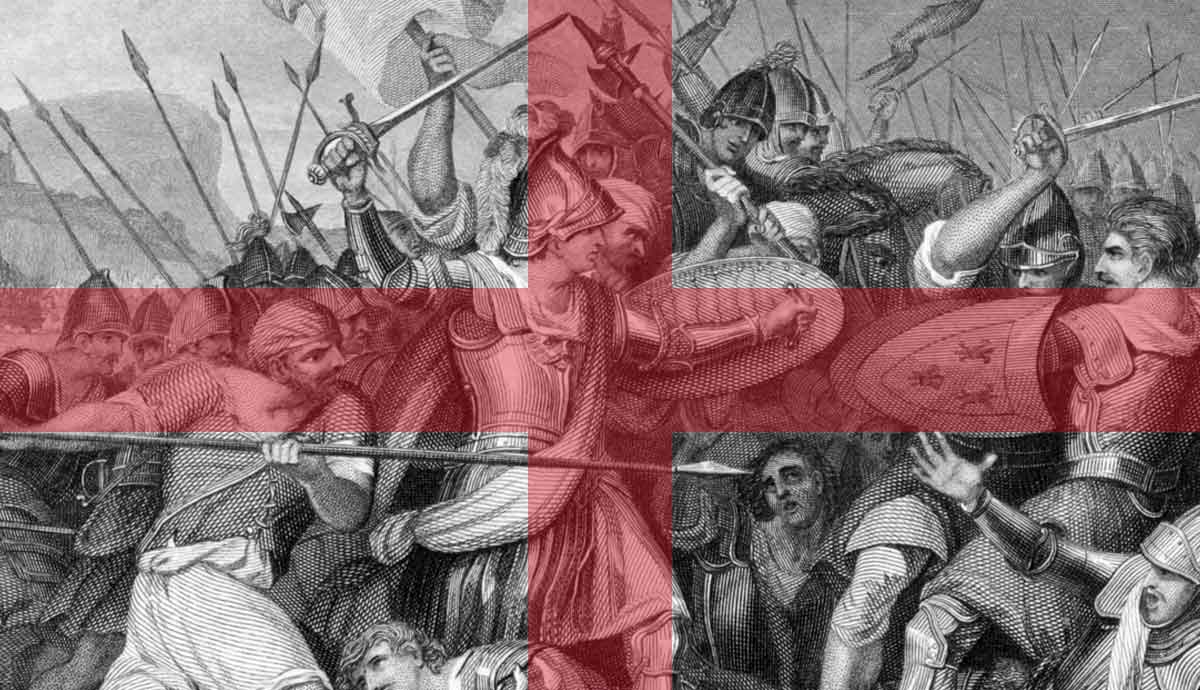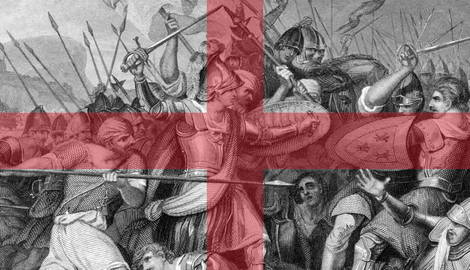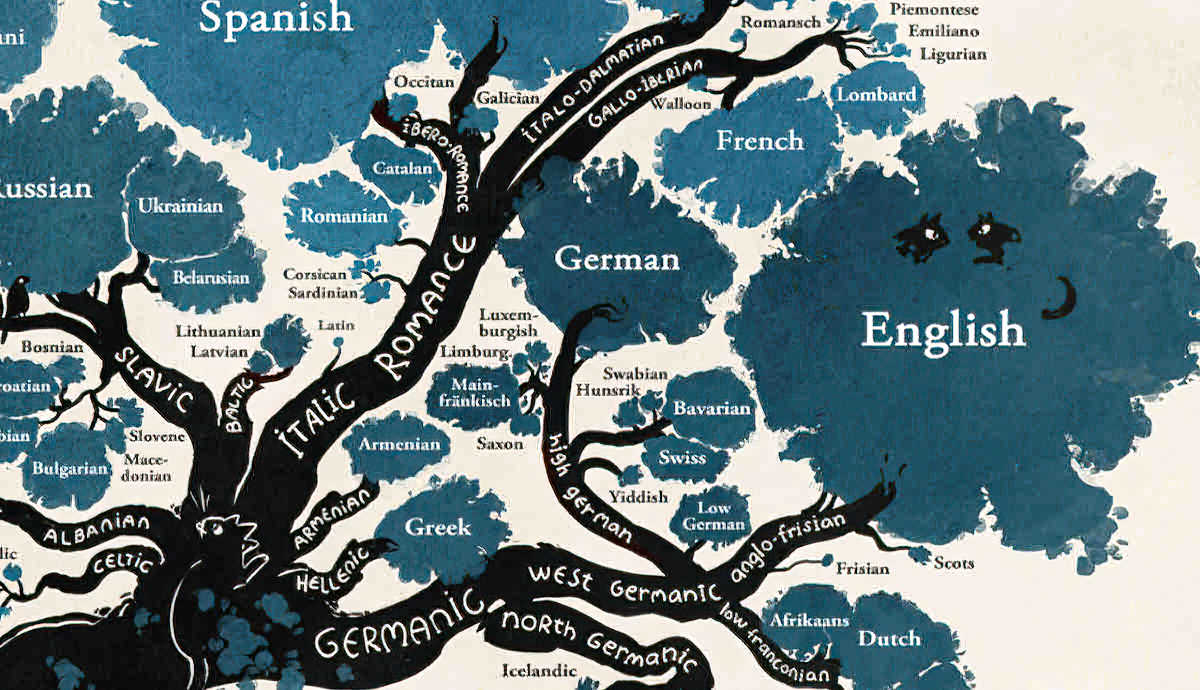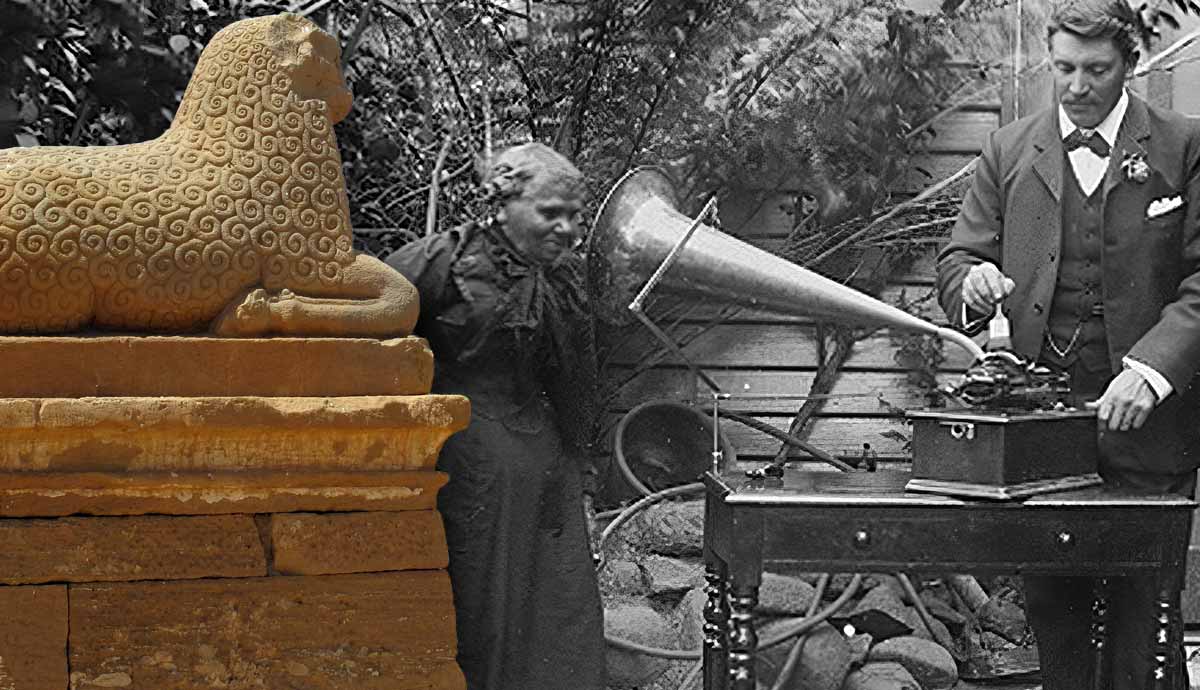
On St. Crispin’s Day, October 25, 1415, a beleaguered English army, tired, hungry, and wracked with dysentery, watched as a vast French army of well-armored knights and footmen readied themselves for battle. The bright pennants fluttered in the breeze, and plate armor glinted in the morning sun. Thousands of horses breathed mist into the cold air, snorting and hoofing at the ground as they bore, upon their backs, the chivalric pride of the House of Valois.
The English were cornered. There was nowhere they could run. But they stood defiant. They drove stakes into the ground and waited for the French to engage. The French were sure of victory against their hated enemy, and their morale was high. Fate, along with a few clever tactics, and the miserable weather, would intervene to wildly change everyone’s expectations. This is the Battle of Agincourt.
Background to the Battle of Agincourt

In 1414, the King of England, Henry V, invaded France after a breakdown of negotiations. The action was part of the Hundred Years’ War, in which the throne of France was in dispute between two royal houses. The House of Plantagenet, which ruled over England and its territories, claimed the throne on which the House of Valois sat.
The invasion began with hundreds of ships crossing the English Channel to deliver 12,000 men and 20,000 horses to attack French possessions on the continent. The English army was led by King Henry V himself and was in high spirits as they began their first engagement by besieging the port city of Harfleur.

Although Harfleur finally fell to the English, the siege was lengthy and costly. The lack of sanitation brought disease in the form of dysentery. With a quarter of their army lost and suffering from malaise, the English were far from being triumphantly overjoyed by their victory. Leading the army was the English king, Henry V, who decided to march to Calais, the English stronghold in northern France.
Meanwhile, the French had raised an army with the intent of engaging and wiping out the English threat. Blocked by the River Somme and French forces taking positions along all the crossing points, the English were forced to march eastwards upriver. The English managed to maneuver across the river but were dogged and shadowed on their way to Calais. Eventually, the French managed to block the English on a stretch of farmland between two forested areas and the towns of Agincourt and Tramacourt. This was where the Battle of Agincourt would be fought.

The English had marched 260 miles (420 kilometers) in two weeks, were suffering from disease and exhaustion, and were almost out of food. And the longer they waited, the more reinforcements would join the French army under the dual command of Constable Charles d’Albret and Marshal Boucicaut.
On the night of October 24, both armies encamped on open ground within earshot of each other. The mood in each camp, however, was not the same. The French, confident of victory, were in high spirits, while the English were ordered to silence and kept a vigilant watch for any French raids during the night.
The French did try to raid the English camp during the night and were beaten back.
Henry V and his aides hoped for rain during the night, and to their relief, the heavens opened up. Unbeknownst to the French and the common soldiers, this downpour would make all the difference between victory and defeat. The ground had turned muddy and became unsuitable for cavalry.
The Battle Begins

On the morning of October 25, the armies assembled. The English army consisted of about 7,000 archers and 1,500 men-at-arms, and dismounted knights. The archers drove stakes (palings) into the ground in front of them to protect themselves from cavalry attacks and took up the flanks while the men-at-arms formed the center, standing shoulder to shoulder, four ranks deep. Units of archers also formed up at regular intervals between the men-at-arms.
On the other side, the French had about 14,000 to 15,000 men excluding about another 10,000 armed servants. The width of the battlefield played an important part in French deployment, and the entire front line consisted of tightly packed dismounted knights and men-at-arms. There was little space for archers or other troops on the flanks. A line of archers and crossbowmen were kept in the rear. On each flank, a force of about 750 mounted knights formed. Conflicting evidence also suggests that the French kept their cavalry in the rear and used their archers to form a line behind the vanguard of men-at-arms. The conflict in dispositions, however, has little bearing on the actions that followed.
There is also conflicting evidence regarding the size of the two armies. Some sources say the English force was around 6,000, with the French army being at 12,000. What is sure is that the English were outnumbered by at least 2 to 1.
For several hours the two armies held their positions and waited for each other to make the first move.

Eventually, Henry V took the initiative and began the Battle of Agincourt. He advanced a group of a few hundred longbowmen through the forest up the English right flank. This was risky, but the group managed to get within range of the French undetected. Meanwhile, the English line uprooted their palings and advanced along the defile towards the French army. The king then gave the order for the bowmen in the forest to open fire and for the rest of the army to halt and prepare defenses.
The mounted knights on the French left flank received volleys of fire from the bowmen in the forest and, together with the knights on the opposite flank, charged the English lines while the French men-at-arms began the advance. Henry V gave the order for the rest of the archers to open fire, and the sky went black as English arrows blocked out the sun, raining death and destruction upon the French knights and their horses. Within the thick clay-like mud of the fields, freshly tilled for the sowing of winter crops, the rain had turned the soil into a quagmire. Horses struggled through the morass while being struck with armor-piercing bodkin arrows.

The cavalry foundered and broke, fleeing through the French lines and disrupting the cohesion of the French men-at-arms.
Despite the disruption to their formation, the French front line hit the English lines hard, and the fighting was fierce and desperate. Even Henry V took up his sword and joined the fray. The French numbers, however, worked against them, and the rear and flanks of the French vanguard were a target for the English longbowmen who sent volley after volley into the French ranks. The arrival of the second line of French men-at-arms caused further problems. The push from the rear failed to break through the English lines, and the mud took its toll, and men in plate armor slipped and fell into the soil, which created a vacuum against the smoothness of the armor. The French soldiers were struggling to get up once they fell. While their lighter-armored opponents fared better.
The English Seal Their Victory at the Battle of Agincourt

When the storm of arrows subsided, the longbowmen downed their bows and, with axes, knives, swords, and other melee weapons, got stuck into the flailing French. Surrounded and exhausted, many French surrendered, and many hundreds were taken prisoner. Fearing that the huge number of prisoners would pose a threat, Henry V ordered them to be executed. Highborn nobles were unmercifully and ignominiously dispatched by peasants. This was a gross violation of the codes of chivalry and took the French completely by surprise.
Henry V sent a herald to the rest of the French army, informing them that the same fate awaited them, as the English were in no position to care for prisoners. With the horror unfolding before them, the rest of the French army retired from the battlefield and left the English to their victory.
The Battle of Agincourt had been a desperate but decisive struggle against the odds for the English. A combination of clever tactics and fortuitous weather worked in their favor. For the French, the Battle of Agincourt was an enigmatic series of unfortunate events. What should have been a simple and easy victory turned into a disaster of monumental proportions.
The Aftermath of the Battle of Agincourt

Near the end of the fighting, a local French force raided the unprotected English camp and made off with some valuables, including one of Henry V’s spare crowns. This action, however, did not affect the flow of the battle.
On the battlefield, the casualty rate was completely lopsided. The English lost around 600 men, while the French lost around 6,000. Among the dead were the English Duke of York and the French commander Charles d’Albret. Boucicaut was taken prisoner and died years later in an English prison.
The English victory at the Battle of Agincourt allowed Henry V and his army to reach the safety of Calais. Henry V returned to France in the following years to conquer Normandy and put England at its territorial height during the war.

During the Hundred Years’ War, England and its allies won many decisive battles against the French such as at Poitiers, Crécy, and many others. However, the Battle of Agincourt is the most celebrated in terms of its effect on English national identity. Not only was it a triumph against their national enemy France, but it was a triumph of the peasants over the nobility. Armed with their longbows, poor soldiers decimated the French nobility in all its arrogance and rewrote the rules of medieval warfare in the process, spitting on the chivalric codes of treating nobles with clemency and respect. And Henry V, in his desperation, gave them leave to do so.

Modern society also remembers the Battle of Agincourt with a mix of legend and myth. Much of this is owed to Shakespeare, who, through his play, Henry V, used poetic license to distort the facts and create a sense of patriotism among the English audience.
The Battle of Agincourt remains firmly engrained in human memory as one of the most important battles in history, not only for its strategic significance but for the fact that it is a monumental underdog tale, the likes of which have always delighted human audiences.










